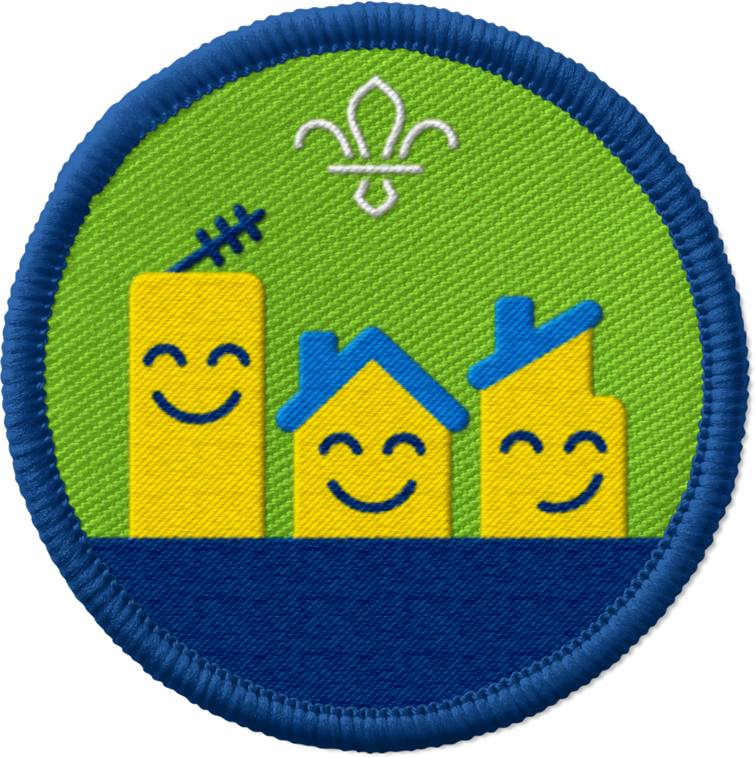
Picture postcards
You’ll need
- Scissors
- Coloured pens or pencils
- Blank postcards
Before you begin
- This activity is designed to be run after you’ve taken some action as part of a community project. Check out this activity What makes a house a home?
- Prepare the postcards by cutting plain card into smaller squares or buying pre-made blank notecards. Before the session, cut them into the shape of a house.
Story time
- Everyone should sit in a circle.
- Someone should read The Last Shoemaker from Crisis.
- After reading the story, everyone should take some time to reflect on it as a group. We’ve included some questions to help you reflect in the pink box below.
Yew is from Malaysia, and trained as a master shoemaker with his friend Jimmy. Yew’s father and grandfather were both master shoemakers too, and he is the last in the line.
When Jimmy set up a shoe shop in London, he asked Yew to move to the UK to work with him. Together they made the most stupendous shoes you’ve ever seen!
They made shoes for princesses and pop stars all over the world. Can you imagine what colours and shapes they were?
After ten years working together, Jimmy sold his shop and Yew opened his own shoe store.
Yew’s designs featured in newspapers, and he had lots of famous clients. They called him The Shoe King!
But the world began to suffer from a financial crisis. People lost their jobs and their homes. They no longer had money to buy Yen’s fabulous footwear with its expensive price tags.
Yew closed his shoe shop. He couldn’t sell his shoes so he put them in a storage unit.
Yen had a lot of bills to pay and not much money. He couldn’t pay for his house so he left and began to sleep in the storage unit. There was no heating so it was very cold.
Sleeping at the storage unit wasn’t allowed, so he had to hide. He couldn’t use the power at night in case someone saw.
A few years passed like this, until the landlord of the storage unit found out Yew was sleeping in there. That’s when he had to start sleeping outside, on the streets.
Yew needed help. He went to a charity called Crisis. They helped him to improve his English so he could be more confident speaking to people.
They helped him learn new skills too – how to make hats so he could sell them, and how to do yoga and tai chi.
The charity gave him a bed at a shelter, and eventually a place at a hostel, so he no longer had to sleep outside.
Since then, the charity has helped Yen pay off his debts and get some money to start making shoes again. Yew is the last master shoemaker in his family, and he is getting ready to reopen his shop.
From Crisis
Taking action
- Everyone should think about what the group has done to help end homelessness. If people have taken actions since your last meeting, or done anything at home or at school, they could share some ideas.
If you have resources people made, or photos and videos of them taking action, consider sharing them with everyone.
- Everyone should talk about what it was like to take action and why it was important.
- Everyone should think about what makes a house a home.
- Someone should make some notes about the things the groups talk about, or some important words or ideas that you can look at again later.
Make your postcard
- The person leading the activity should give everyone a blank postcard.
- Everyone should decorate one side of their card to look like a house.
- Everyone should think about who you’ll send the postcard to – it could be a friend or a family member, or even a local decision maker to let them know what you’ve been doing,
- On the other side of the card, everyone could write one thing they’ve learned about homelessness so far, or a message they want to share with someone. Or they could decorate the card to show what they did to take action. Use the ideas or words discussed in the first part of the activity to give everyone some ideas of what they could write.
- Everyone should write their name on their postcard.
- Invite everyone to share what they’ve made with the group.
- The person leading the activity could arrange to send all the cards, sharing the messages with the world.
You could send them to another local group, or to a local decision maker. Think about how you’ll send them: do they need to be sent in the post or can they be delivered in person?
Reflection
This activity was all about caring for other people and communicating ideas that are important. The activity explores how we can tell the world about some of the things we’ve done to understand homelessness.
The Last Shoemaker
- Why did Yew have to leave his home? How do you think he felt when he had to leave?
- How did Crisis help him?
- How do you think Yew will feel when he can open his shop again? Can you imagine what Yew's shop will look like?
Taking action
- What actions did you take to understand homelessness and what makes a house a home?
- How did you do it? How did the actions make you feel?
- Did you learn anything new?
- How did your actions make a difference for someone else?
Make your postcard
- Was it easy to think of what to draw?
- Did you enjoy drawing pictures and writing words to share your ideas?
- How did it feel making something to share with others?
Safety
All activities must be safely managed. You must complete a thorough risk assessment and take appropriate steps to reduce risk. Use the safety checklist to help you plan and risk assess your activity. Always get approval for the activity, and have suitable supervision and an InTouch process.
- Scissors
Supervise young people appropriately when they’re using scissors. Store all sharp objects securely, out of the reach of young people.
- Glue and solvents
Always supervise young people appropriately when they’re using glue and solvent products. Make sure there’s plenty of ventilation. Be aware of any medical conditions that could be affected by glue or solvent use and make adjustments as needed.
To increase the challenge, try making some origami houses in the Make a house pledge activity.
You could write short messages, draw pictures or add words to your cards to help share the actions you’ve taken – think about what will work best for you group. You could prepare some examples in advance to help everyone understand what to do.
All Scout activities should be inclusive and accessible.
